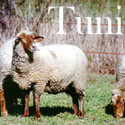New Release of NSIP Katahdin Percentile Reports Percentile reports are calculated once per month and can be found on the Online Searchable Database. The percentile reports provide producers with a benchmark to compare the EBVs of an animal. The report lists the percentile bands of each trait. This allows you to compare animals to see… Continue Reading











